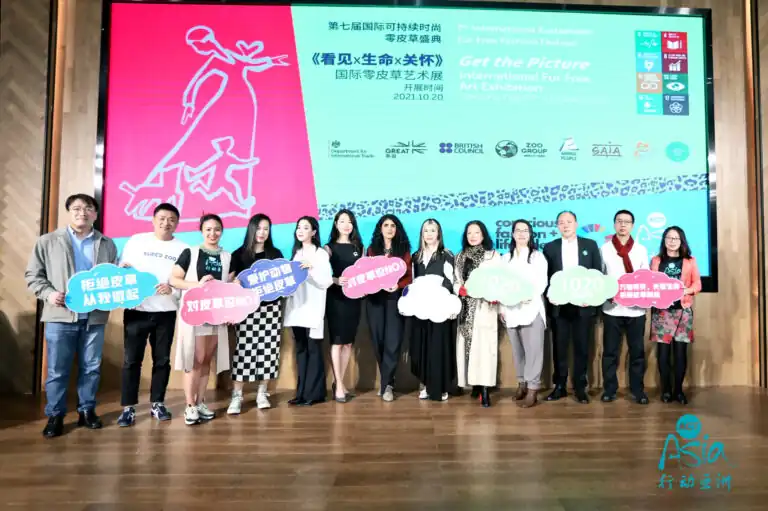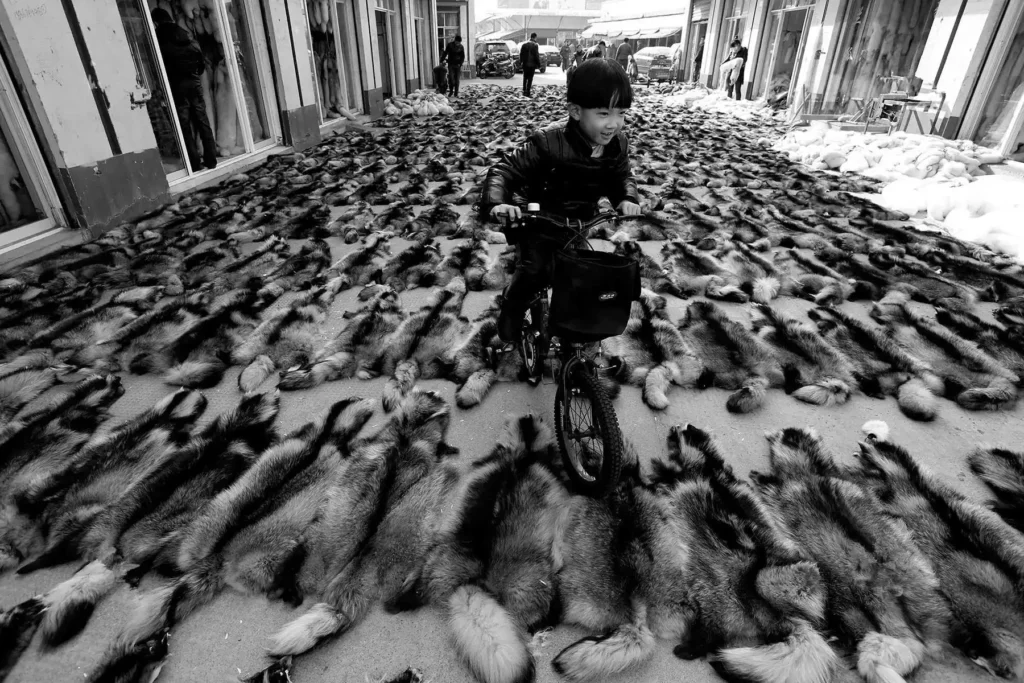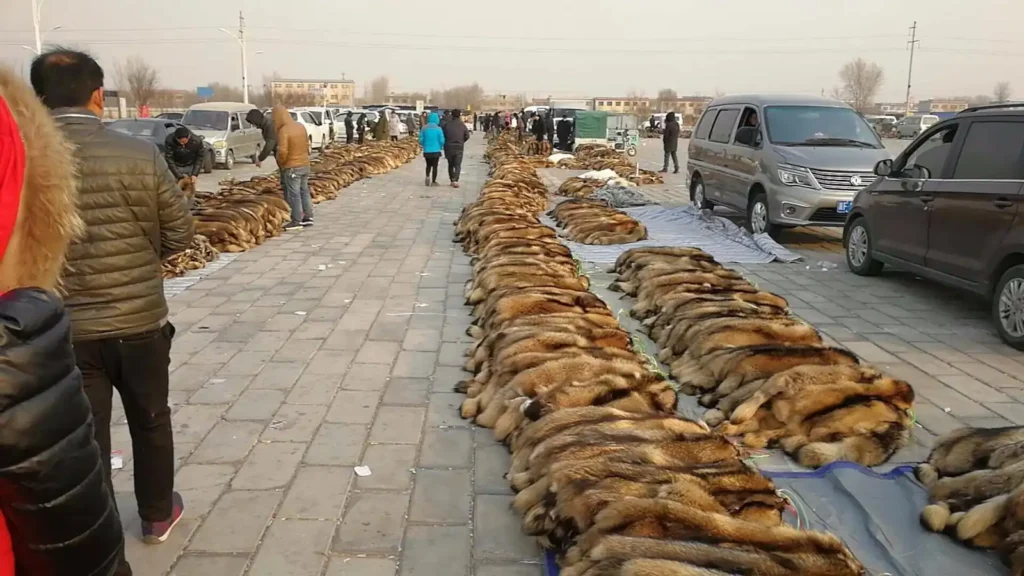March 3, 2025, marks the 12th “World Wildlife Day,” with this year’s theme being “Partnerships for wildlife conservation.” “World Wildlife Day” was established by the United Nations General Assembly on December 20, 2013, to raise awareness of the world’s wild fauna and flora. On the occasion of the 12th “World Wildlife Day,” the China Biodiversity Conservation and Green Development Foundation – ActAsia Special Fund (hereinafter referred to as “ActAsia”) released its latest research report. The report indicates that the highly polluting fur industry is experiencing a significant global decline for the first time, and fur-free will become the mainstream of sustainable fashion.
The updated report, “The China Fur Trade and Its Position in the Global Fur Industry,” released by ActAsia this time, focuses on the global fur industry. Research data shows that between 2022 and 2023, China’s fur production sharply decreased by 54.26%, from 22.06 million pelts to 10.09 million pelts. From May 2023 to March 2024, the number of fur processing enterprises in China decreased from 18,053 to 10,707. Over the past five years, 69% of the most profitable fashion brands have decided to ban fur.

In 2017, ActAsia first researched China’s fur trade and its position in the global fur industry and published the research results in 2019. That report provided the first detailed examination of China’s fur farming, production, and consumption, as well as the import and export of fur products, highlighting China’s significant role in the global fur industry. Since then, ActAsia has continued this research and publishes an updated report every two years. This newly released updated report represents the latest research findings.
This report covers the latest research findings from 2022 to 2023. As the first update since the end of the COVID-19 pandemic, this report emphasizes the significant impact of the pandemic on global health and the future of fur farming. It aims to provide a better understanding of China’s fur industry from the perspective of global fur trade, raise public awareness of the negative impacts of fur farming and production on animal welfare and human well-being, provide reference for relevant policies and regulations, and advocate for the adoption of more sustainable fur alternatives.
The report’s ten key research findings were also announced:
- China is the world’s largest fur market.
- Fur farming in China and globally has shown a downward trend.
- Different regions in China still retain their own characteristics and unique positioning within the fur industry.
- The Chinese fur industry has been increasingly declining in recent years.
- ActAsia’s consumer surveys reveal consumer preference trends for fur accessories and fur coats, as well as the urgent need for fur-related education.
- E-commerce and social media platforms have become popular channels for purchasing fur products, but quality issues have also emerged.
- The international fur industry has actively collaborated with Chinese academic institutions to promote fur among fashion design students and recruit new design talents.
- Fur animal farming poses a high risk to future pandemics (such as the SARS-CoV-2 virus and avian influenza viruses) and violates the “One Health” framework.
- Wild animals used for fur production (mink, foxes, and raccoon dogs) are not protected by the “Wildlife Protection Law of the People’s Republic of China” but are classified as livestock according to the “Animal Husbandry Law of the People’s Republic of China.”
- Animal welfare standards for fur farming (such as WelFur and Furmark®) fail to adequately assess animal welfare in fur farms.
Regarding the above research findings, observers have noted that the number of fur production enterprises is constantly decreasing, and fur production is also significantly declining. The fashion industry is gradually abandoning animal fur products. This phenomenon reflects a significant weakening of market demand. This is undoubtedly a positive signal for those who have long been promoting sustainable fashion.
Education is the fundamental way to cultivate respect for others, kindness to animals, and awareness of environmental protection. ActAsia focuses on humane education, especially promoting consumer education on “sustainable fur-free fashion” to encourage consumers’ empathy for others, animals, and the environment.

Since 2017, ActAsia has been researching and publishing reports on China’s fur trade, tracking and updating them every two years. The reports describe the process of raising, trapping, confining, and slaughtering animals, as well as the process of turning animal fur into fur garments. ActAsia also investigates the true origins of fur products on the market, reveals the phenomenon of false labeling of goods, and has conducted research on potentially harmful toxic substances remaining in fur products sold on the market.
Globally, tens of millions of animals are slaughtered each year solely for their fur, and China holds a major share in the global fur market. In 2022, China produced nearly 100% of the world’s raccoon dog fur, 91% of fox fur, and 31% of mink fur. Particularly in the northeastern region, the cold climate conditions result in thicker animal fur, which has also driven strong local demand for fur products.

The fur industry has long been controversial, mainly due to the severe compromise of fur animal welfare and the resulting human health and environmental damage issues, including the release of toxic chemicals and water eutrophication. Compared to other types of fabrics, fur also consumes more water resources and produces more greenhouse gases. Data shows that the carbon footprint of producing 1 kg of mink fur is 31 times that of producing cotton.
Fur farms may also impact global health and are considered high-risk sources for future pandemics. According to another study, “The Impact of Fur Farming on One Health,” fur farms may involve at least 18 life-threatening sources of infection, including COVID-19, botulism, MRSA, and rabies.
Su Peifen, Founder and CEO of ActAsia, stated that the significant decline in global fur production is undoubtedly a positive development. The fur industry has numerous health, environmental, and ethical issues, and fur production and sales cause harm to humans, animals, and the environment. Consumers in Europe and North America continue to express their support and demand for fur-free products through a series of actions, such as the European Citizens’ Initiative “Fur Free Europe.” Global mainstream fashion brands such as Kering Group are also continuously implementing fur-free strategies. This indicates that the public wants to end fur and is working together to make the fur-free future a reality.
Su Peifen also stated that in China, strengthening consumer education is key, and it is necessary to raise awareness among consumers, fashion students, and retail brand personnel about the animal welfare issues, environmental impacts, and human health risks involved in fur. For example, many people are unaware that the toxic chemicals used in fur processing pose serious health risks to consumers and workers, including cancer, nerve damage, and reproductive problems. ActAsia’s 2022 consumer survey showed that education can significantly change consumer attitudes and behaviors. Other programs, such as ActAsia’s “Sustainable Compassionate Fashion: Issues of Sustainability and the Global Fur Trade” course, also play a crucial role in guiding consumers and the next generation of fashion designers to make more ethical and sustainable fashion choices. By choosing next-generation “animal-free” materials (such as GACHA and KOBA), animal welfare, environmental sustainability, global health can be promoted, and the fashion industry can be driven towards greater compassion.
Su Peifen called on the industry and consumers to work together to protect wildlife: “The fur farming industry causes severe living pressure on a large number of caged animals and has significant negative impacts on the environment and human health. We expect regulatory authorities to continue to strengthen management, promote the transformation of the traditional fur industry, and contribute to ecological civilization construction. At the same time, publicity and education for consumers should be strengthened to enable the public to fully understand the true situation of fur production and promote sustainable alternatives.”

Hi, this is a comment.
To get started with moderating, editing, and deleting comments, please visit the Comments screen in the dashboard.
Commenter avatars come from Gravatar.